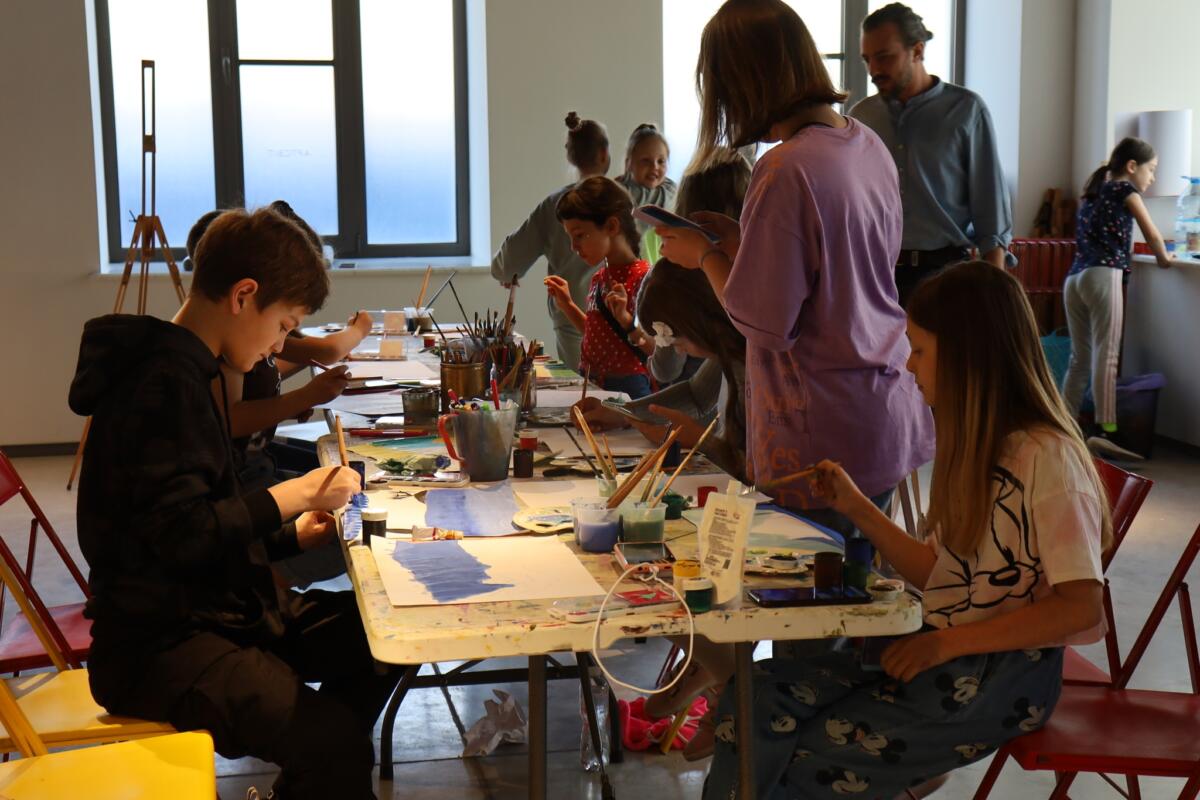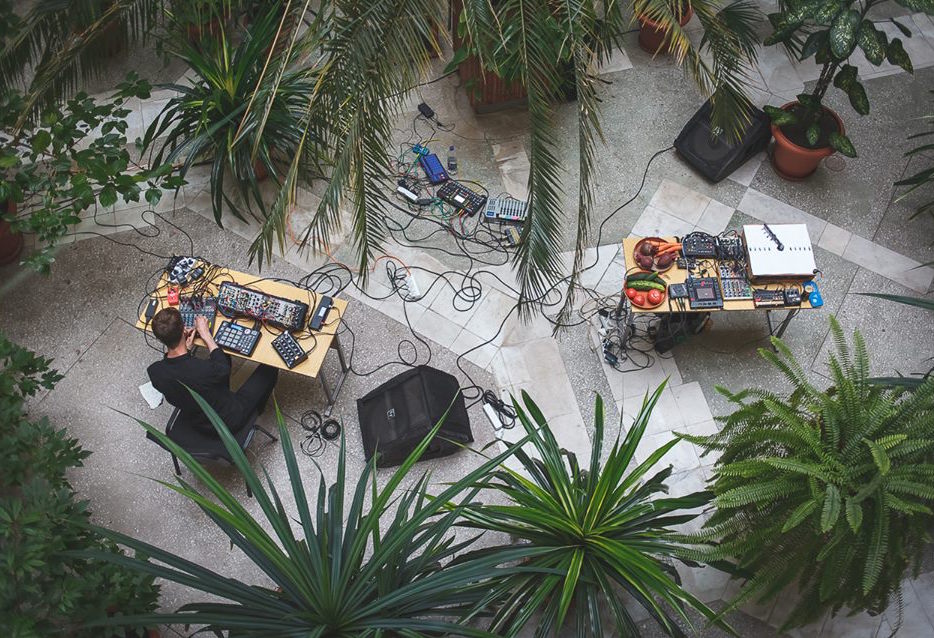
In the first days of the full-scale war, the functioning of cultural institutions, cultural life, and, indeed, life itself was hardly imaginable. Nevertheless, during the past year and a half of the big war, many cultural activists have managed to resume their work and reintegrate culture and art into their wartime routines. One of these examples is the Dnipro Centre for Contemporary Culture (DCCC), an institution located in one of Ukraine’s cities closest to the frontline.
Dnipro is a major industrial city, the fourth most populous in Ukraine, located in the southeastern part of the country and almost equidistant from the frontlines in Zaporizhzhia, Kherson, Donetsk and Kharkiv. Since February 2022, Dnipro has become a centre of military resistance; the city, located close to the frontline, has hosted perhaps the largest number of IDPs (internally displaced people). In addition to the fact that one community in the region has been under regular threat of artillery shelling, the city itself has repeatedly experienced brutal and tragic attacks by the aggressor on both civilian infrastructure and residential areas. The geography and description of war realities are essential to understanding the challenges faced by those living and implementing any projects in these areas: uncertainty and unprecedented threats to life, regular air alerts, frequent sounds of explosions and endless disturbing news, large numbers of people who have left and even larger numbers who have arrived with widely varying traumatic experiences, seeking refuge and trying to reinvent their lives.
As a physical space, the DCCC appeared in 2019 in the building formerly occupied by zemstvo, a local government institution. But the idea of such a space came about long before that. The centre grew out of the union of various initiatives, the key among them being the Kultura Medialna NGO, which in 2014, after the Revolution of Dignity in Dnipro, organised, the first international festival of audiovisual art and new media. The cultural centre’s activities are based on community cohesion, sustainable development, and change-making. In particular, this is what shaped the institution’s activities in a time of crisis and total uncertainty. During the full-scale invasion, the DCCC was a hub for volunteer and humanitarian organisations, including the integration of IDPs. In June 2023, they resumed activities more similar to peacetime, opening the exhibition Let the long. Road. Lead. To. Stairs in. The Heavens. Currently, the team of Kultura Medialna is preparing for the eighth edition of Construction which will take place at the DCCC, dedicating this year’s festival to grassroots initiatives. Each aspect mentioned above is described below with the team’s comments.



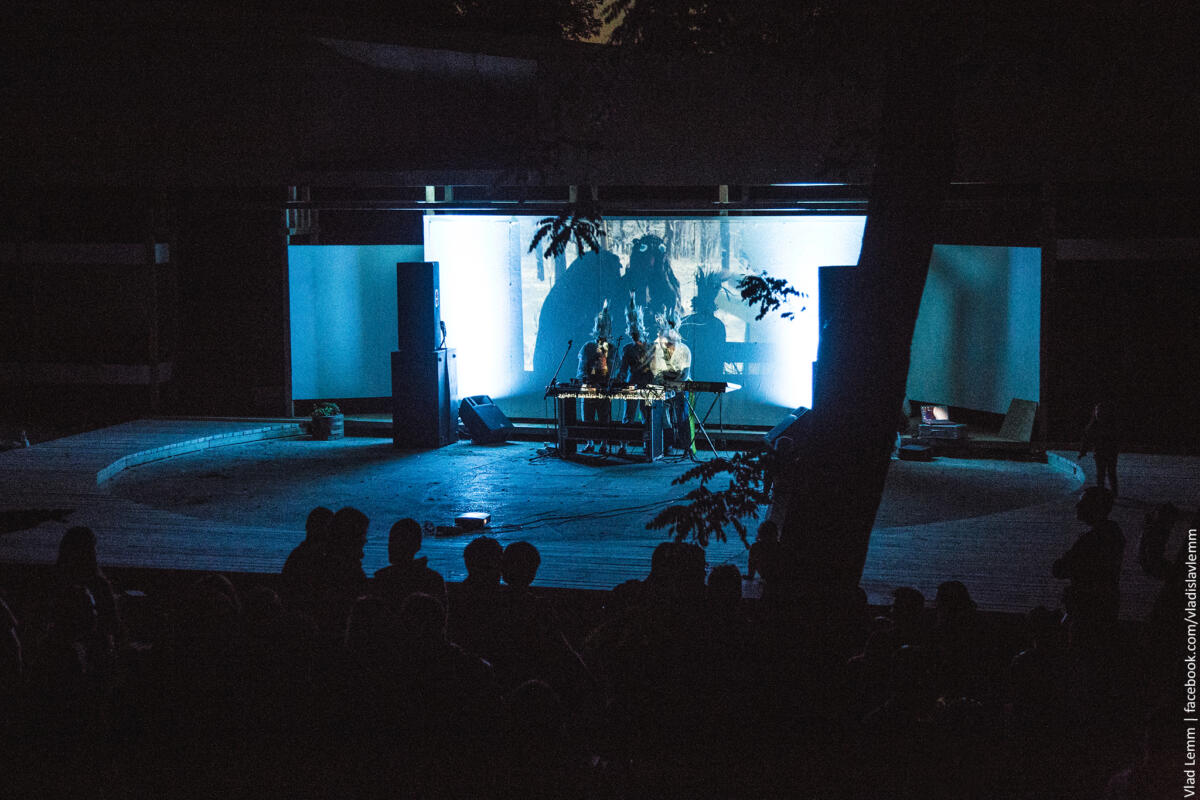

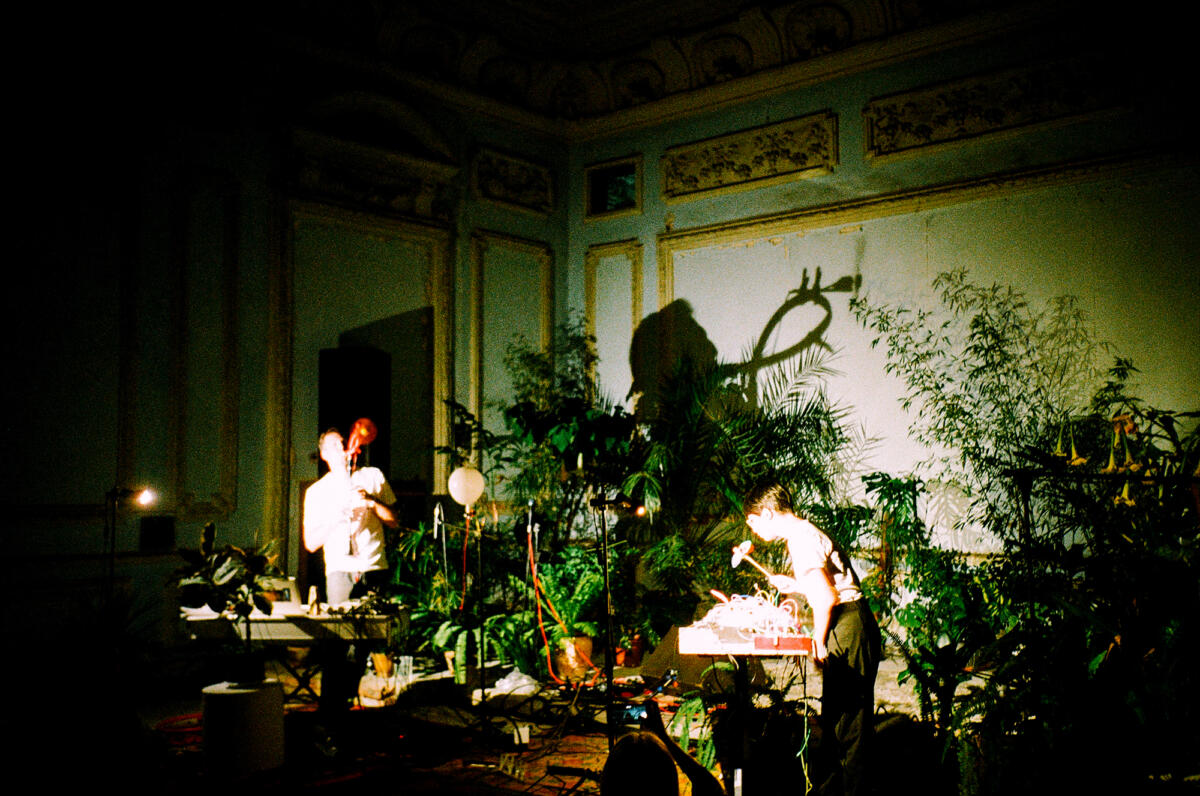
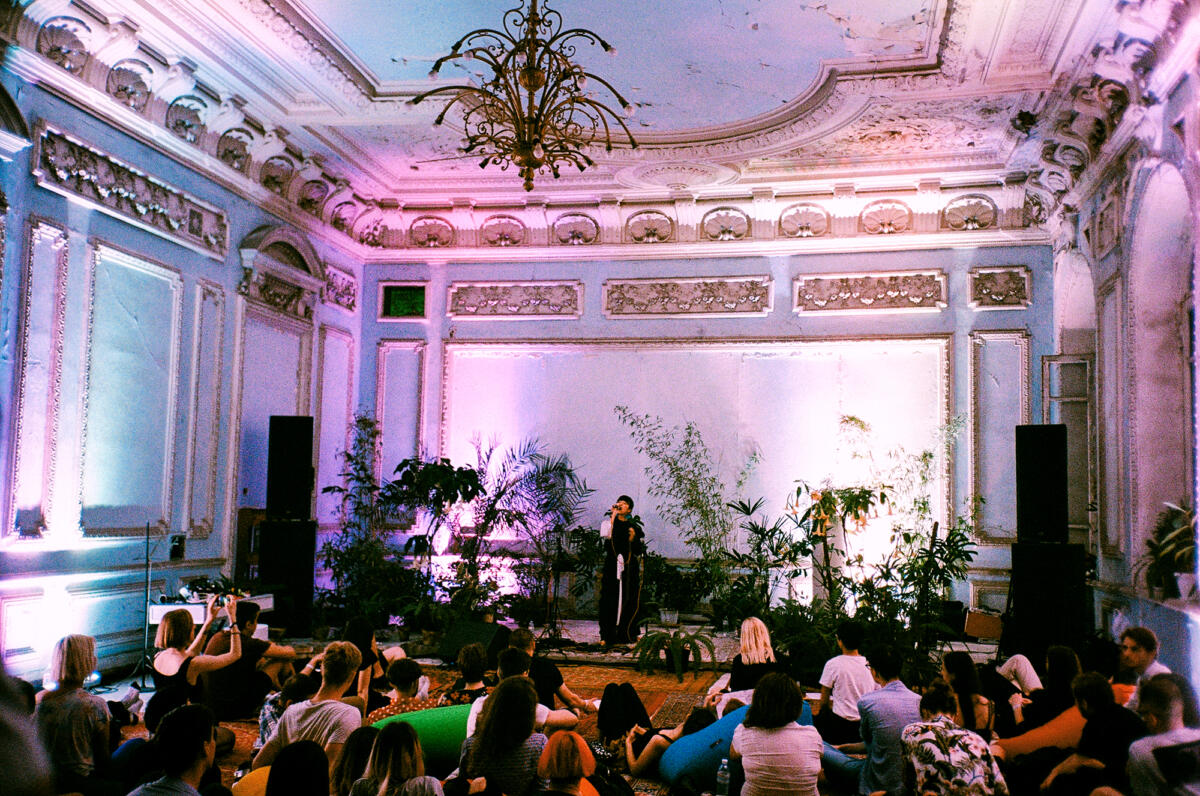



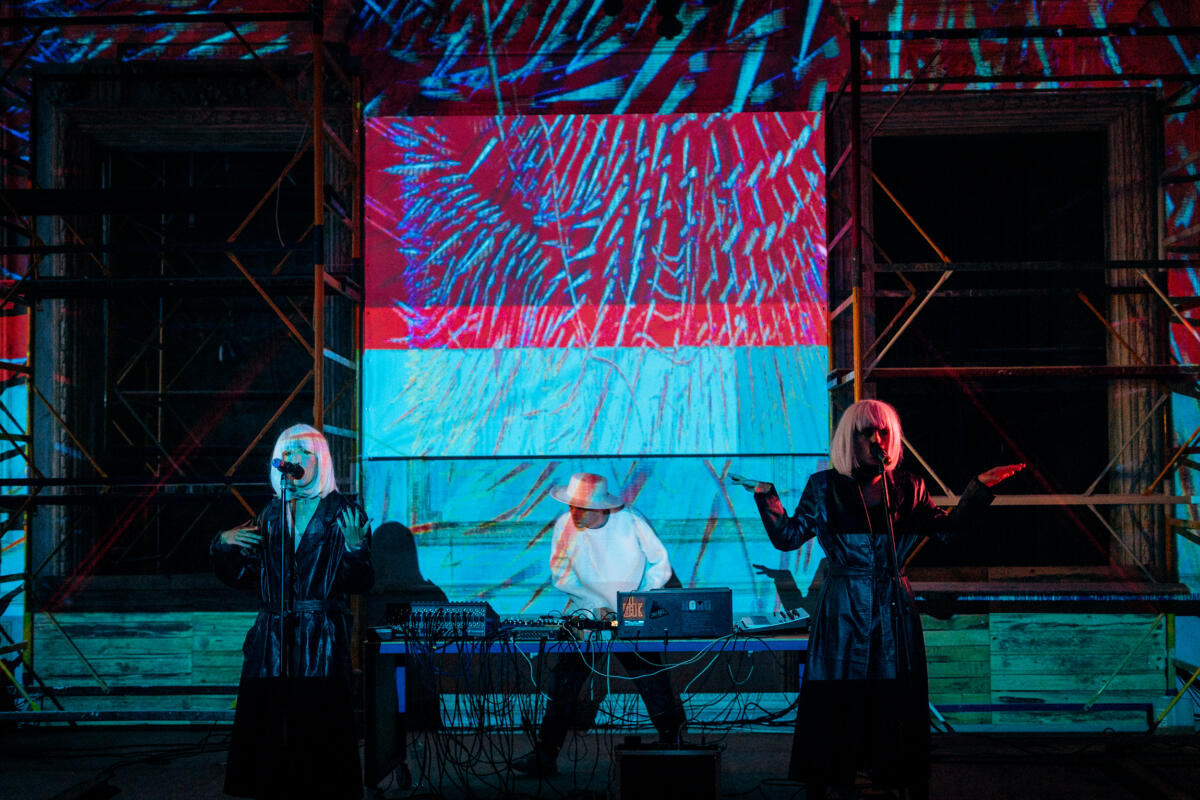
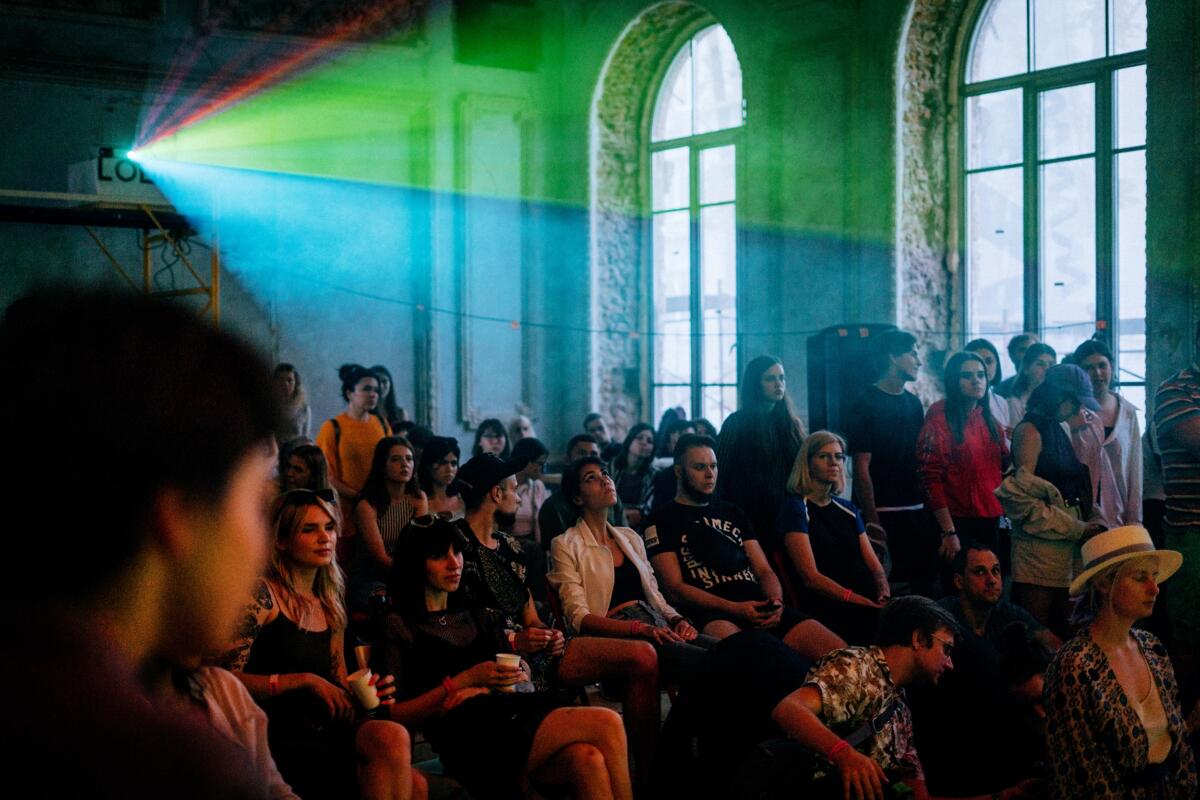
Solidarity
One of the key projects of the cultural centre during the full-scale war was the Social Hub. This temporary educational, humanitarian, and cultural space appeared in March 2022 to integrate IDPs, support Ukrainian artists, and promote awareness of Ukrainian culture. The project included film screenings, music events, discussions, various workshops and educational programmes for both adults and children. One of the activities implemented within the Hub was the Community Kitchen project, which aims to bring people together through food — cooking and eating together, but also through understanding traditions and a critical view of local food origins. Diana Khalilova, the curator of Community Kitchen, said more about the initiative: “A community kitchen (just like community garden and similar initiatives) is a well-known space format (it doesn’t have to be permanent) that develops a certain community to meet its needs for communication, learning about the culture of different city residents through cooking national dishes, learning new skills in cooking, food storage, etc. And I dreamed of implementing such a space in Ukraine, even temporarily.”
Before the full-scale invasion, Diana worked as a cook in various places. She became familiar with the cultural centre’s team through volunteering at Construction. When the DCCC team started implementing the cultural and educational project Social Hub in 2022, Kateryna Rusetska and Andrii Palash (founders of Kultura Medialna and the DCCC) invited Khalilova to run Community Kitchen. When asked about the project, Khalilova shared the following:
Back then we thought of cooking and eating together as a kind of therapy, because people can easily find a common language and get to know each other while cooking. Both residents of Dnipro and IDPs from the eastern and southern regions came to the events. Over time, ideas for themed events began to emerge, for example, to hold a workshop on grain, salt, sugar, and milk, and talk about who else is fed by Ukrainian grain, who has visited the Artemsil caves, how sugar magnates supported the development of Ukrainian culture etc. It is important for me to involve food researchers and gastroenthusiasts in events, as well as artists who understand the relationship between food and culture, and even reflect on these connections in their practice. For example, Sana Shahmuradova hosted an event on milk, where she talked about the image of the nursing mother in art, including in her own work. To the last Kitchen, I invited Tamara Turlyun, co-author of the zine Hostynets (Treat) with colourings and recipes for family dishes. She and her mother used to make “hree horns’ pies”, the recipe for which is also in Hostynets. And Tamara told me when and how she and Lada Verbina (co-author of the zine) came up with the idea of project.
I was also impressed by the story of Olha Pavlenko, a Ukrainian cuisine researcher from the Uspenka village in the Kirovohrad region. She spent many years collecting old recipes from different regions of the country, focusing on the cuisine of her family and her native village, and in early 2022, she published a book as a result of this hard work. However, in the summer of 2022, Olha Pavlenko was killed in a Russian missile attack on the Amstor shopping centre in Kremenchuk. In her book, Olha Pavlenko wrote about how Russians destroyed or appropriated Ukrainian cuisine (through deportations, the Holodomor, and rewriting history) because it is also an important part of national culture. Olha is one of many cultural figures and activists who have become victims of Russian aggression. I needed to tell her story and showcase her work at the Community Kitchen.
Imagining the Future
With the support of Kultura Medialna, the DCCC also opened the exhibition Let the long. Road. Lead. To. Stairs in. The Heavens. which was first presented in the Czech municipal gallery PLATO in Ostrava in the spring of 2023. One of the curators, Clemens Poole had this to say about the exhibition:
I don’t believe that the only way to produce solidarity and sympathy from the international community is to show increasingly distressing images. I think there’s a way to elicit these emotions by articulating complex human experiences and emotions. As someone empathetic, I believe that the most lasting way to capture my attention is to present a complicated representation of the human experience rather than merely showing acts of violence. It’s not like we didn’t want to show war. We wanted everything to be in the context of war. And I’m not shy about showing images of war either; I’m not worried about offending people with horror images. However, our primary concern was to consider what would be productive. During that period, numerous exhibitions focused on the portrayal of war. While it may be effective for some, we wanted to do something else. We developed our show with Ostrava’s audience in mind, and we anticipated that observers would interpret it through the lens of war. Still, we wanted to talk about that beyond portraying Ukrainians as victims.
A few months after Ostrava, the exhibition arrived in Dnipro, where it opened two days after the terrorist attack on the Kakhovka hydroelectric power station. Astonishingly, visitors did not question why the opening was held during such a large-scale tragedy; on the contrary, the project, which demonstrated the diversity of variations of the future retained its criticality, as is the nature of contemporary art. But it also had a therapeutic component, allowing viewers to empathise with familiar uncertainty and fear, but also believing that each of us has a future. Poole added:
“I definitely think that the topic of that exhibition is still relevant because the central theme of the exhibition revolves around the concept of destiny and how we think about it during the war. To me, the idea of destiny in that exhibition was about contemplating the future when there is endless potential for things like the Kakhovka Dam disaster to be present. It’s not specifically related to that, but that’s an example of this thing that makes it impossible to think about the future. At the same time, you can’t base your life around the possibility and the prediction of some total cataclysm. But what you can do is focus on other things. This is not to say you shouldn’t focus on war but to say that the conception of destiny in that exhibition was about how to reframe everything in the present as if you’re looking at it from the future.
Destiny, in a sense, is a temporal concept, yet it is outside of time. It exists in the present, the past, and the future. It’s all about our connection with it and our identification of it. It’s not solely about what I will do tomorrow. This is why it allows you to think about the future because it gives you confidence that if there is a future, there is a destiny. It’s like an endless continuum. Embracing this perspective gives you the strength to deal with the present, which can be challenging. But when you’re trying to find destiny in the present and the past, because you have access to this past, you can identify these things that also have implications for the future.“
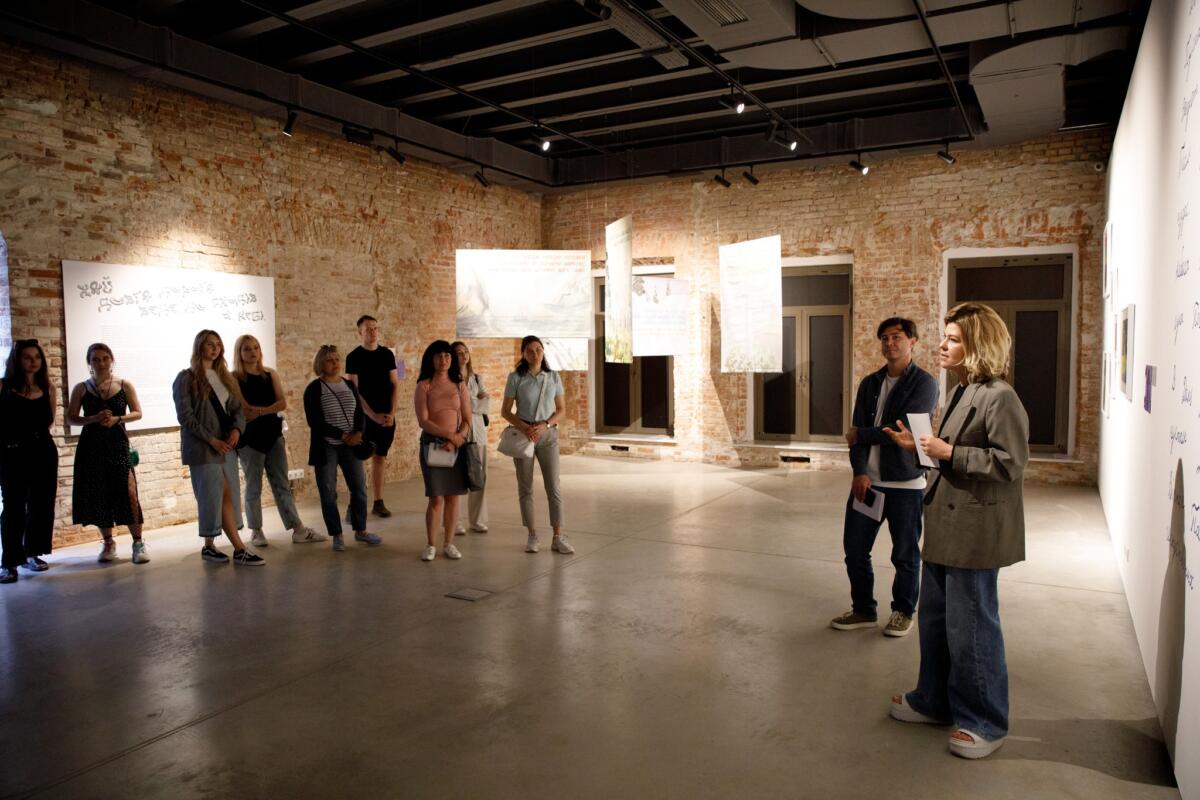

Grassroot Construction
The example of DCCC’s activities is actually quite illustrative of the Ukrainian cultural landscape, especially after 24 February 2022 when most of the events that take place have been aimed at raising money for military or humanitarian needs and a typical social media feed of an average Ukrainian, without exaggeration, consists of something like 80% fundraising. The full-scale war has highlighted the advantages of grassroots initiatives; such organisations can respond quickly and effectively to new challenges and fulfil their community’s needs. Andrii Palash, head of Kultura Medialna and the DCCC, had this to say about the centre’s activities in the first half of 2022:
After the beginning of the full-scale war, the centre’s work was suspended for about 2 weeks. Then I had a wish to use our building in a useful way. And since in the first weeks there was a very significant flow of displaced people — about 300,000 people travelling to Dnipro from the east and south of Ukraine — we decided to focus on helping IDPs. At first, we negotiated with various charitable foundations and organisations that dealt with humanitarian issues, then we created a Social Hub to help internally displaced people, interact with them and integrate them into our society. At the same time, around the 3rd month of the full-scale war, we realised that we needed to restore educational and cultural programmes, as there was such a demand.
Being a self-organised initiative, the team of Kultura Medialna understands not only the value but also the challenges faced by cultural activists. Therefore, while continuing their activities and planning this year’s Construction, the curators chose Ukrainian Hardcore: Learning from the Grassroots as the theme and decided to focus on the reflection of wartime experience and the participation of the public in the social, cultural, and physical recovery of Ukraine. Palash added:
In 2023, we focused on helping cultural workers, artists, and educators who work and stay in our city and continue their professional activities. Last year showed us that culture is relevant. When we gradually renewed our core activities (holding music events, classes for children, film screenings, and resuming the art programme at the Artsvit), we noticed that there was interest and feedback from people who attended these events. So now we understand that it is important to continue working in the field of art. It is also important to talk about and highlight the activities of volunteer movements and initiatives that exist in Ukraine and are engaged not only in reconstruction, for example, but also in the artistic environment because they are needed, and much is based on them. Such initiatives are the foundation and hope of our society.


Construction took place in Dnipro from 10–12 November 2023. It brought together self-organised initiatives that remain in the country and work at the intersection of culture, activism and volunteering. Also, for those who are physically unable to attend the festival and thus support the project, the organisers have launched Remote Construction — a box with recordings of discussions, music performances, and additional content from the festival за donate from €15.
Edited by Katie Zazenski
Imprint
| Place / venue | Dnipro Center for Contemporary Culture |
| Index | Amina Ahmed Dnipro Center for Contemporary Culture Katie Zazenski |


